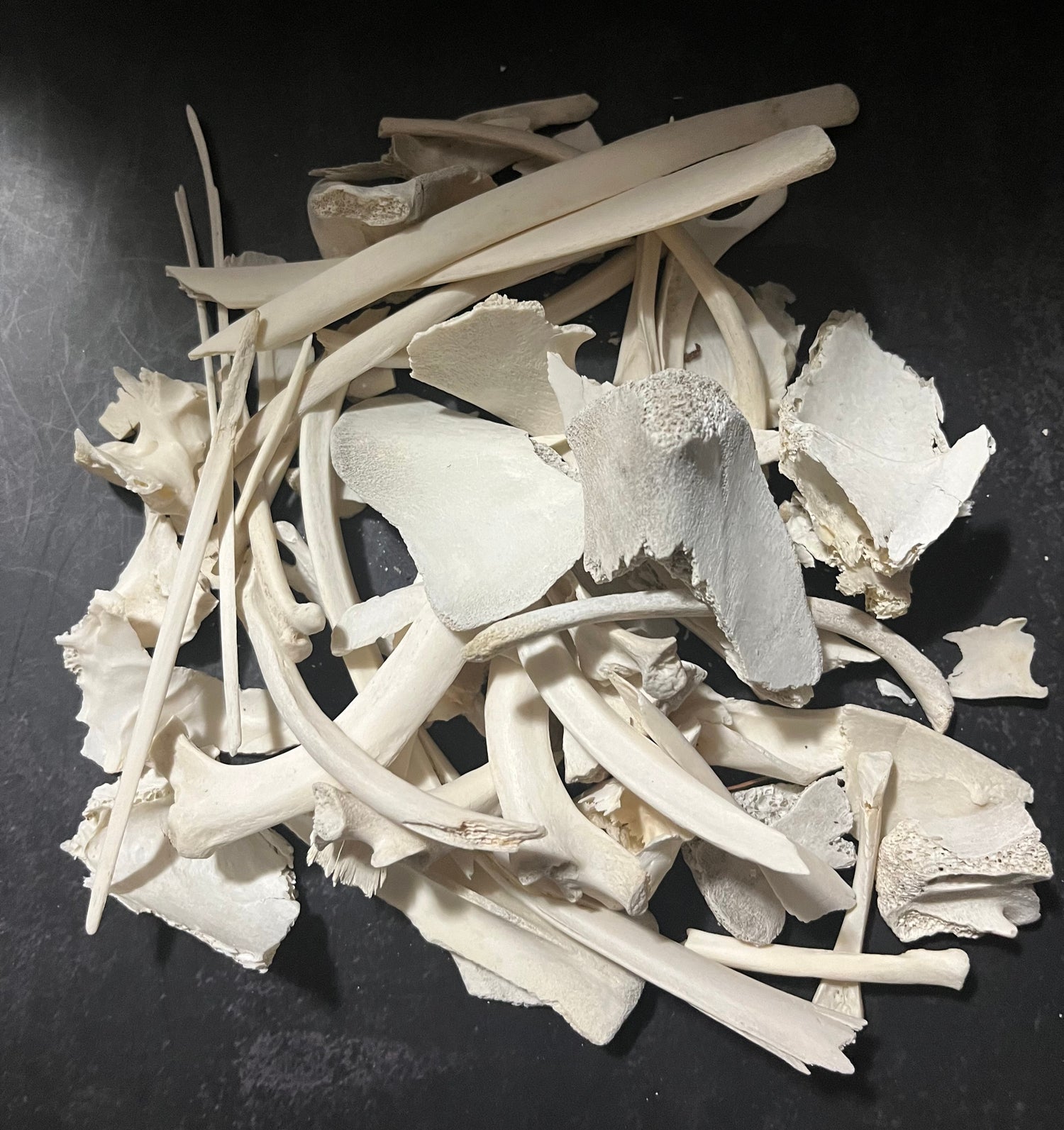
Brittle Bones
When you find bones in the woods, you might notice they often seem crumbly and fragile. This happens due to various environmental factors and natural processes.
Weathering:
One major reason bones become crumbly is due to weathering. Bones exposed to the elements—like rain, wind, and temperature changes—gradually break down over time. This constant exposure causes the bone tissue to deteriorate, making the bones more fragile and prone to crumbling.
Microbial Activity:
The soil in wooded areas is full of microbes that help decompose organic matter. These microorganisms break down the organic components of bones, weakening them and causing them to crumble. While this process is natural and part of the ecosystem's cycle, it speeds up the bones' deterioration.
Humidity and Moisture:
Woods often have varying levels of humidity and moisture, which can affect bones significantly. When bones are exposed to moisture for long periods, fungi and bacteria thrive and further degrade the bones. High humidity levels also cause bones to absorb moisture, making them more susceptible to damage and crumbling.
Chemical Reactions:
The type of soil where the bones are found also affects their condition. Acidic or alkaline soils can cause chemical reactions that change the bones' mineral composition, making them more fragile. The specific chemistry of the soil in wooded areas can either help preserve bones or cause them to deteriorate more quickly.
Plant Roots:
Roots from trees and other plants can grow into the areas where bones are buried. As these roots expand, they can physically disrupt the bones, causing cracks and fractures. This physical disturbance speeds up the breakdown of bones, making them more prone to crumbling.
Animal Activity:
Wildlife and insects in the woods also play a role in bone degradation. Animals might gnaw on the bones, and insects can burrow into them. This mechanical damage exposes the bones to more environmental factors, which speeds up the crumbling process.
Time and Decomposition:
Time is a crucial factor in the crumbliness of bones. The longer bones are exposed to the elements, the more they break down naturally. Over time, the combined effects of weathering, microbes, moisture, chemical reactions, plant roots, and animal activity cause the bones to deteriorate and crumble.